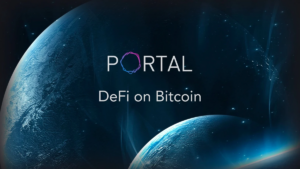TL;DR
- Chainlink shows how a blockchain enables instant settlement, removes intermediaries, and lowers costs in cross-border payments.
- Onchain traceability provides real-time visibility, allows transfer verification, simplifies audits, and reduces disputes and operational costs.
- The Chainlink network integrates data feeds, Proof of Reserve, CCIP, SmartData, ACE, and CRE to verify prices, collateral, and connect chains.
The current infrastructure for cross-border payments still relies on fragmented processes that raise costs and introduce delays. Each transfer passes through correspondent banks, clearinghouses, and systems with cutoff times, creating multi-day settlement windows and a fee structure that is difficult to anticipate.
The lack of visibility into payment status forces companies to maintain buffers and rely on manual verification procedures that increase operational expenses. The market moves roughly $1 quadrillion per year but operates with tools that cannot keep up with the scale, frequency, or immediacy required by international transactions.
The Blockchain Technology Shift
A blockchain network removes many of these constraints by offering a distributed ledger that settles payments in seconds, runs continuously, and coordinates instructions without relying on intermediaries. Near-instant settlement reduces counterparty risk and eliminates time-zone windows, allowing payments between regions without waiting for overlapping business hours or banking days. Fewer intermediary layers reduce fees and stabilize costs, which is critical for companies managing international supply chains or recurring flows across multiple currencies.
Onchain transactions are publicly verifiable, and every party can check the status of a transaction in real time. This traceability streamlines audits and lowers operational disputes. The structure enables use cases that require immediacy: B2B transactions, low-cost remittances, interbank transfers, and P2P transactions without traditional banking infrastructure.
How Chainlink Ensures Efficient Cross-Border Payments
Chainlink provides the layer that enables these payments to operate in institutional environments. Its Data Feeds supply real-time FX prices, which are essential for quoting amounts at the moment of settlement.
Proof of Reserve delivers verifiable data on the collateral backing stablecoins and the assets used in payment flows. The Cross-Chain Interoperability Protocol (CCIP) coordinates value transfers across blockchains and links public and private infrastructures.
SmartData brings in real-world information to validate collateral, set settlement limits, and perform jurisdiction-specific valuations. The Automated Compliance Engine (ACE) applies compliance rules —from KYC to sanctions checks— before a transaction is executed. Finally, the Chainlink Regulatory Engine (CRE) oversees the entire operational lifecycle of the payment and connects enterprise systems with onchain execution.
Together, these components create an environment where cross-border payments become faster, more predictable, and verifiable, establishing the technical foundation for financial infrastructures to shift toward global and automated models













